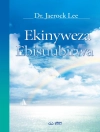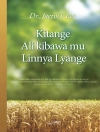In our age of ecological crisis, what insights—if any—can we expect to find by looking to our past? Perhaps, suggests Virginia Burrus, early Christianity might yield usable insights. Turning aside from the familiar specter of Christianity’s human-centered theology of dominion, Burrus directs our attention to aspects of ancient Christian thought and practice that remain strange and alien. Drawn to excess and transgression, in search of transformation, early Christians creatively reimagined the universe and the human, cultivating relationships with a wide range of other beings—animal, vegetable, and mineral; angelic and demonic; divine and earthly; large and small.
In Ancient Christian Ecopoetics, Burrus facilitates a provocative encounter between early Christian theology and contemporary ecological thought. In the first section, she explores how the mysterious figure of khora, drawn from Plato’s Timaeus, haunts Christian and Jewish accounts of a creation envisioned as varyingly monstrous, unstable, and unknowable. In the second section, she explores how hagiographical literature queers notions of nature and places the very category of the human into question, in part by foregrounding the saint’s animality, in part by writing the saint into the landscape. The third section considers material objects, as small as portable relics and icons, as large as church and monastery complexes. Ancient Christians considered all of these animate beings, simultaneously powerful and vulnerable, protective and in need of protection, lovable and loving. Viewed through the shifting lenses of an ancient ecopoetics, Burrus demonstrates how humans both loomed large and shrank to invisibility, absorbed in the rapture of a strange and animate ecology.
表中的内容
Introduction
I. BEGINNING AGAIN WITH KHORA: TRACES OF A DARK COSMOLOGY
Prelude: Anticipations of an Eco-Chorology
Dreaming Khora: Plato’s Timaeus
Interlude: Fragments of an Eco-Chorology
Khroric Legacies: Readers of Timaeus and Genesis
Interlude: Beginning Again with Scripture
In/Conclusion: Khora, God, Materiality
Postlude: Beginnings, Again
II. QUEERING CREATION: HAGIOGRAPHY WITHOUT HUMANS
Prelude: Ecocriticism as Queer Theory
Before Hagiography, Autozoography: The Life of Plotinus
Queerly Ecological: The Lives of Antony, Paul, and Mary of Egypt
Interlude: Desertification
Holy Disfigurations: The Life of Syncletica
Saint as Posthuman Assemblage: The Life of Simeon the Stylite
Interlude: Performance Art
In/Conclusion: Saints and Other Queer Creatures
Postlude: A Tough Love
III. Things and Practices: Arts of Coexistence
Prelude: Theorizing Things
Things: Relics and Icons in an Animate World
Things: Architecture, Landscape, Cosmos
: Fragments of a Material Theology of Things
Things: Rhetoric and Performativity in Basil’s Hexaemeron
Desiring Things: Contemplation, Creation, and God in Augustine and Pseudo-Dionysius
: Words and Things
/Conclusion: Things, Practices, Piety
: The Things That Matter
Epilogue: Worm Stories
Notes
Bibliography
Index
Acknowledgments
关于作者
Virginia Burrus is the Bishop W. Earl Ledden Professor of Religion at Syracuse University. She is author of Saving Shame: Martyrs, Saints, and Other Abject Subjects and The Sex Lives of Saints: An Erotics of Ancient Hagiography, both available from the University of Pennsylvania Press.







![的封面 Brian Schrag & Julisa Rowe: Community Arts for God's Purposes [Chinese] 貼近神心意的社群藝術 的封面 Brian Schrag & Julisa Rowe: Community Arts for God's Purposes [Chinese] 貼近神心意的社群藝術](https://static.worldofdigitals.com/thumb_webp/740/9781645083740.webp)




